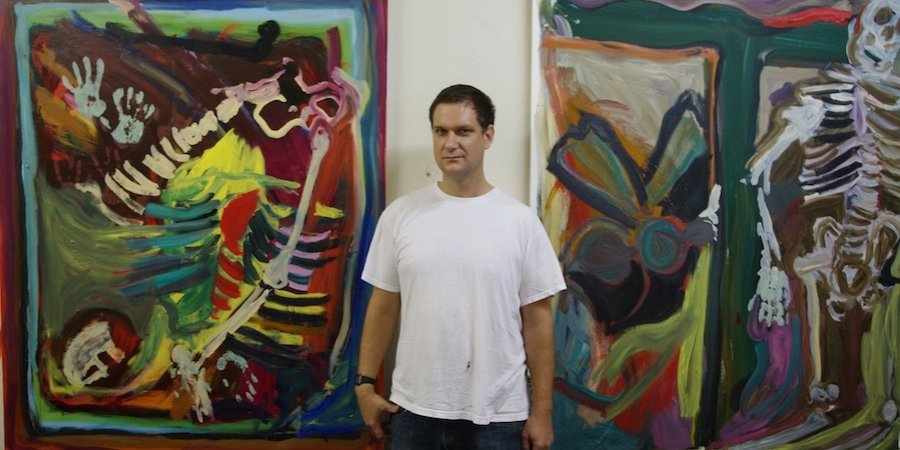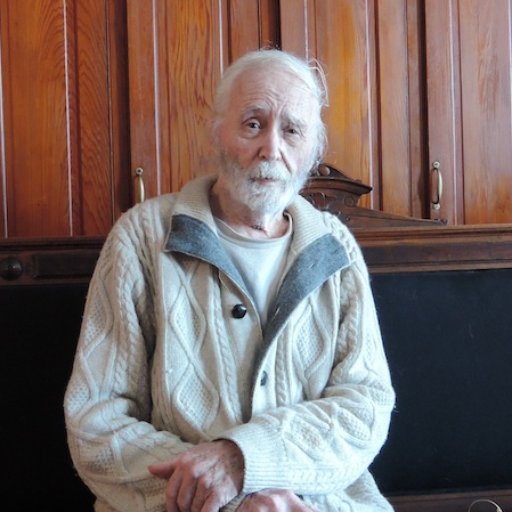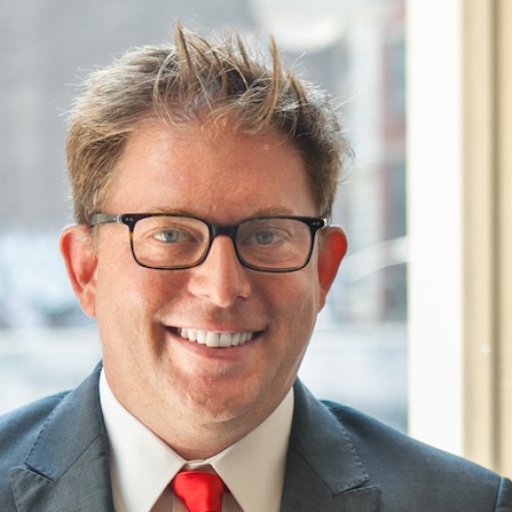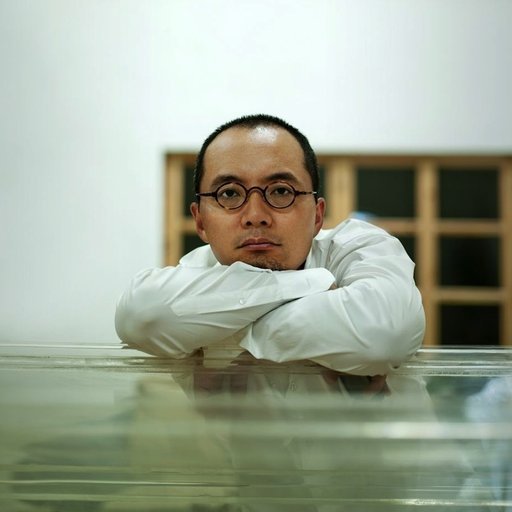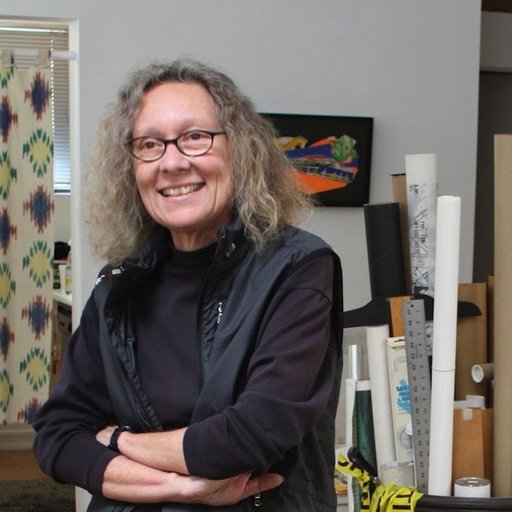Known for his famed signature paintings—as in paintings with his signature scrawled prominently across the canvas, almost like a graffiti tag—Josh Smith has earned a reputation as something of an art-world daredevil, creating paintings that zoom from one zany motif (say, dinosaurs) to another. In his short career, he has already done everything from expressionistically painted canvases to hard-edged paintings of stop signs.
Now, Smith continues to change his style in even more marked ways with two shows—one of monochromes, and another of tropically hued palm tree paintings—at Luhring Augustine's Chelsea and Bushwick locations, respectively. We talked with Smith about the importance of demystifying art, his unusual process, and why he keeps painting over his old paintings.
You’re probably best known for your expressive, richly colored paintings that often have your name scrawled as their most prominent component. What ideas are you exploring with these literally "signature" canvases?
Well, originally, I was just exploring the ideas of making art. I guess it started in school, where I was just exploring different technical and compositional ideas. As time went on, I realized that an artist's name was a large part of what it meant to be an artist. It helped that I had a simple name because the letters themselves had such nice shapes.
Did the signature paintings come naturally to you?
When I was learning about art in an educational setting, it seemed like as good an idea as anything else. You could paint that or you could paint a brick wall, a self-portrait, or something else entirely. I chose to do the signature paintings. I was also studying printmaking, so I used the look of prints to create the aesthetic of these paintings.
Your compositions have these very gestural lines and thick applications of color that seem to evoke both Expressionism and Abstract Expressionism. What do you aim to bring to that historical lineage, or what new issues do you hope to explore?
Well, I have to take everything from before when I started, simplify it, and make it something an average person, such as myself, can understand. I don’t know, I’ve never really thought about that before, but maybe those abstract paintings simplify the work of the artists who inspired them, or they at least try to celebrate all the hairiness that went on in abstract painting.
Would you say that you want your work to be easily understood?
I want people to have the option to understand it, or to at least have the option of understanding how it was made. In many of my works, there isn't even that much to understand. If anything, I would like to take the mystery out of art-making. There doesn’t have to be some kind of technical trick where you should have to explain it somebody in order for an average person to understand it. It doesn’t have to be complicated. Art materials are applied to something else, and then you just roll like that. I think people appreciate my style because I’m good at letting go. There’s not a lot of precision to what I’m doing. It’s all about the perspective. The viewer can make things as precise or as open as they want.
You often make your works in profusion, with a dozen canvases on a wall. They’re sometimes in grids, as is the case with your Luhring Augustine show in 2011. It gives the impression that your works are done spontaneously, and in great number. Could you describe your process?
I’m always testing out ideas, and only part of what I do is paint in the studio. The other part of my process is doing shows, which is just part of being the type of artist I am. As a show comes nearer and nearer, I’ll try to hone in on something that I want to say. So I’ll put a few canvases around the studio, and if all of those don't work for me, I’ll try to correct with another canvas across the studio. A show might accumulate. That’s not always how it happens, though. The grid thing was somebody else’s suggestion—it was just one way to group all these things. I’m really open to experimenting with ways of presenting my work. It’s nice and easy to make things and turn the presenting of them to someone else.
As for the actual art-making part, sometimes I scrap everything, and sometimes I paint things over. I keep a lot of balls in the air when I’m working. But I work towards a show, generally. In a perfect world, I wouldn’t have to do that, but that’s the way it is. That said, I’m trying to change this process with every time I step into the studio.
How many works do you make at once?
I make many works at once, but generally, I only finish one at a time. If I like something, I’ll finish it. There’s no definite method to that, really. I’m not very rigorous, and if I see something that’s finished, I’ll just pull it out before I paint over it.
Do you paint over works that you find unsatisfactory?
I do that all the time, until you can tell that a canvas is too thick. In the last few years especially, you can see more layers in my paintings.
How long does it typically take you to make a painting?
It varies. Sometimes, the paintings are around for years. In the way I work, there is no difference between making and looking. I think they’re really the same thing, actually. The making takes a second, and the looking takes much, much more time.
You mentioned earlier that you had early training in printmaking. How does that inform your larger process?
In school, I thought painting and printmaking were just supposed to be crafts. I didn’t realize that painting was a philosophical field of study, and I didn't know that printmaking was more technical. I was naturally drawn to printmaking because there were never that many people in those classes, and they gave you access to all this great equipment. So that's how I initially started making prints.
What's great about printmaking is that you don’t really need an idea to start printmaking. You can just start inking anything and make it a print. You can build art out of nothing. That’s a lot of what I’ve done and what I continue to do, and I know that I can always go back to printmaking to mine a million ideas. But I try not to do that.
You’ve also scrawled the names of galleries and museums that seem to be involved in your work. It seems like you're giving the works an autobiographical cast. What do you hope to reveal about yourself in your works?
Those are announcement paintings, and they result from a museum or gallery asking me to make a poster. They’re silkscreens, and I really just enjoyed making them. I made a lot of those. The announcement paintings are just made to celebrate the moment. I try to make them as little autobiographical as possible because celebrating the show was their only purpose. I don’t make them as much anymore, but people still ask me to make them sometimes. In my other works, however, I hope to reveal that I believe in the power of one-person work within the world of ideas. I want people to believe in me and what I do. At the very least, my work is honest, and I try to take a leap forward with every work I can offer.
At one point, you stopped making gestural paintings to do the stop sign paintings, and you’ve said that that is the “ultimate conceptual artwork.” What did you mean by that? What led you to that shift?
I react to what other artists around me are doing, and I was seeing a lot of gestural work, so it was time for a change. If you keep introducing the same style, your work will get assimilated into the art world too quickly, even though you might be presenting work that is revolutionary in its own way, in terms of your body of work. The stop signs were a way for me to slow down my whole process. I’d been throwing my paintings, like nothing, like they were garbage, for ten years. I was also having a lot of problems with my back. Those were works I could do on a tabletop, not upright. I’d just been seeing stop signs a lot, and then I thought it would be great if I was going to make something reflective. Then, all of a sudden, I painted a sign painting. I always wanted a stop sign of my own, but I had never had the courage to take a stop sign down from the corner of the street. I thought, “Well, I’ll make a cool looking one.”
I made ten, maybe 15. I like them a lot. As to what they mean, it’s not a sharp thing. As with most art, there’s not a sharp answer. But the gist of it is, it’s meant to be confrontational. For most of my paintings, if you tell someone that I made it, it could be obvious that Josh Smith made the painting, but the stop sign paintings could really be from any artist. I’m always looking for ways to crawl out from under the “Josh made that” thing.
Is that what you were trying to do with the new Luhring Augustine shows?
Yes. I had those monochromes for over a year. I wasn’t even going to show them. Nature was not inspiring me in the way I wanted it to inspire me. Nature is more inspiring in a straightforward way—in a “Paint me” or “Enjoy me” way. It doesn’t get me to make the paintings I want to make. I made those palm tree paintings and monochromes in response to that. Initially, I had no idea why I was doing these paintings, but now I realize that that was it. I always wanted a monochrome painting, and I always wanted a palm tree painting. I guess that’s why. It’s also just this kind of escapism.
We live in an era where the personal brand is becoming more and more important, more and more visible, even, with celebrity culture. What is your take on the way that plays a role in contemporary life?
That whole personal branding thing is kind of over. I think the cooler people are the ones who don’t draw attention to themselves. As far as those paintings go, they did nothing for me necessarily. They’re nothing about my image. Now the paintings are iconic of a moment. The name ones are easy because it’s just my name. There was a time where it was really hard to do that, but now, it’s easy. They're terrible and they're good. They're a million things. They're not even answerable, really.
In addition to making art, you and Todd Amicon also founded the 38th Street Publishers, which has published books by you, Terry Winters, and Rob Pruitt, among other artists. Why did you decide to start publishing artist books?
Well, I’ve always made lots and lots of books, but that particular project was so that Todd would have a job. He had moved to New York, and we were friends from college. He was good at the computer. He got into the books that I had lying around the studio. First, I started making books, then I asked other people. It was very successful. The artist had an idea, and then he just executed it. There was really no editing. We’d ask other people to make them for fun. There just started to be too many books, unfortunately. Then they started doing that book fair, and I just didn’t enjoy that. But otherwise it was great, and I would pick it up again in a second if I found the right person and a way to distribute it. Those books were cool—so cool that I even used to make them as a personal rule—but it ended up really burning me out. Since then, I’ve been making a lot of ceramics, and I was thinking it must be because I don't do books anymore. I always have a foil to keep me from painting—just something to do when I’m not screwing around in the studio.
Who would you say are some of the artists who’ve inspired you the most?
There are lots of artists that inspire me, but the big inspirations are everyone else's big inspirations. Picasso, Warhol, Georgia O’Keeffe, Jasper Johns, Rauschenberg, Duchamp, Bruce Nauman. De Kooning’s cool. As a painter, he’s very inspiring. I also keep tons of art books and magazines, so I just take snippets from each one. I love catalogues raisonnés, too. I just love to see all the work that a person did in his life. Good or bad, the work always has some human value. I hope I can be like that myself with my work.
What was your first artistic experience?
Just like anybody, it was in school. I was drawn to the whole process, even cleaning up at the end and putting all the supplies back. My mom was a school teacher, so when I was waiting for her to finish her work, I had plenty of paper at my disposal. When I got older, I did all her photocopies and bulletin boards. Then, later, I was ultimately faced with the decision of what I was going to do about college. When it came to choosing between business school or another real thing and doing what I loved, I chose art. After four years of that, I just got bored, so I moved to New York, where I would have to be competitive or just do something else. I figured it would work out.
Is there anything you collect?
Nothing I would save in a fire, but I have tons of books and tons of other people’s art, most of which is from my friends.
What are you working on now?
It’s funny, in those weeks when you’re installing a show, there’s so much creative energy. I just want to work and work, but it’s so tiring, and I unfortunately just never have the time. You have to talk a lot more than usual, but I’m not a crazy talker, so my voice is worn out, too. I want to work so bad. I actually have tons of ideas for the first time in a long time. But it’s not the right time. My body’s not up to it, and I want to repaint the floor anyway. I want things to be really fresh again. I just don’t have the energy to execute them right now.
RELATED LINKS:
Josh Smith Bursts Out in Living Color at Luhring Augustine











